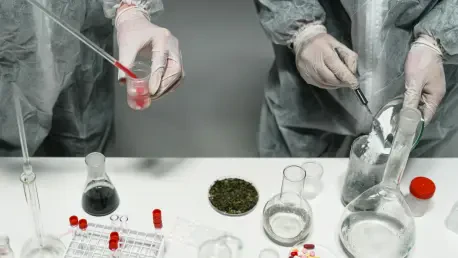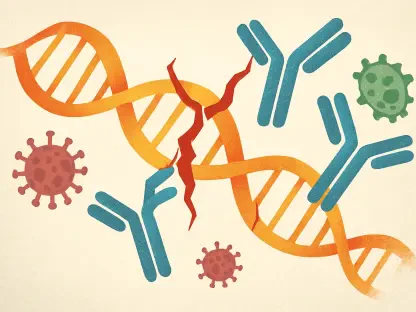In recent years, the convergence of artificial intelligence (AI) and marine biology has opened new avenues for drug discovery, capturing the attention of the scientific community. At the heart of this novel approach lies the venom of the elusive cone snail—small, venomous marine mollusks found in coral reef sands. This venom, composed of numerous toxins known as conotoxins, offers valuable prospects in therapeutic research. Historically regarded for its deadly properties, the venom’s complex biochemistry also holds potential benefits, especially in pain management by disrupting neurological pathways. Coupled with AI, researchers are now positioned to decode and classify these toxins more efficiently, potentially transforming how new drug candidates are identified and evaluated. This interplay between advanced computational techniques and biological research not only speeds up the drug discovery process but also promises to address challenges in characterizing these intricate biochemical compounds.
The Complex World of Cone Snail Venom
Cone snails use their venom as a defense mechanism and to capture prey, unveiling thousands of unique conotoxins, each with the potential for novel drug development. These toxins, despite their harmful nature, can disrupt pain pathways, showing promise for pain relief therapies. However, the primary challenge remains in accurately categorizing these toxins based on their interaction with biological receptors, allowing researchers to foresee their potential uses as medicinal compounds. Los Alamos National Laboratory has made significant strides in this field by employing AI and targeted datasets to predict the categorization effectively. By doing so, scientists aim to unlock the secrets of these toxins, offering a foundation for new drugs. Understanding the classification of conotoxins involves mapping the relationship between their biological targets and pharmacological families, akin to pigeonholing each conotoxin based on the receptor it influences, such as sodium or calcium channels.
Within these toxin families, shared mechanisms and structural similarities offer insights into their roles, which aids in predicting new characteristics and assessing their potential as drug candidates. Los Alamos researchers have harnessed machine learning, a branch of AI, to streamline this classification. Their methodologies not only expedite the process but also anticipate future applications in developing effective treatments. This advancement is crucial, given the dynamic nature of conotoxin interactions, which often defy conventional classification based on DNA alone due to post-translational modifications. Such modifications are changes that proteins undergo after synthesis, altering their shape and function—factors critical to understanding conotoxins’ bioactivity. Thus, while AI plays a pivotal role, experimental data remain indispensable for delineating these complexities, contributing to the overall comprehension of their therapeutic potential.
Advancements in AI-Driven Research
Applying AI to the study of cone snail venom represents a transformative leap in the utilization of technology in biological research. AI models, like those employed by Los Alamos scientists, rely on a small yet critical dataset featuring known conotoxin structures and modifications. The objective is to craft a classification tool capable of identifying previously uncharted conotoxins. Specifically, the research team tackles the challenge of data imbalance—where available data skews towards non-conotoxin proteins. To mitigate this issue, they employ the SMOTE-Tomek technique, which involves creating synthetic data entries to level the dataset. SMOTE stands for Synthetic Minority Oversampling Technique, which augments the dataset by adding artificially derived data entries stemming from experimental results, resulting in a balanced representation. Conversely, Tomek methods remove data samples that might convolute the model, ensuring clarity and distinction.
This refinement allows AI models to categorize unrecognized conotoxins into correct pharmacological families, subsequently confirmed by experimental validation. This breakthrough underscores AI’s capacity to distill complex data sets, delivering unprecedented accuracy in drug discovery research. Biochemist Hau Nguyen notes that this capability holds immense potential for identifying new therapeutic molecules, grounded in the wealth of pharmacological targets affected by conotoxins. As experimental datasets expand, so too will prediction accuracy, enabling scientists to pinpoint effective drug candidates more swiftly. This evolution not only revolutionizes current methodologies but also sets the stage for future innovations in medicinal chemistry. The effective collaboration between AI technology and marine biology opens doors to a deeper understanding of natural compounds, leading the way for groundbreaking medical solutions.
Future Potential and Broader Applications
Beyond the immediate implications for drug development, the fusion of AI and conotoxin research illustrates broader applications extending across various scientific disciplines. The Los Alamos researchers’ approach showcases how meaningful insights can be extracted from limited data, offering invaluable lessons in resource-constrained environments. Their development of a software tool grounded in machine learning underscores this, with prospects for adaptation into portable devices—expanding its applicability in both scientific research and security domains. By demonstrating the potential to utilize scarce biological data effectively, researchers highlight a methodology that could serve as a template for other fields contending with similar constraints.
Equipped with AI-backed models, scientists can better navigate the scarce data landscapes often encountered in niche biological research. Additionally, the potential adaptability of these tools in diverse scenarios, including portable applications, underscores AI’s expansive utility. The Los Alamos model offers a glimpse into a future where technology not only aids but drives scientific inquiry across varied arenas, laying the groundwork for innovations that may reshape multiple sectors. This evolving paradigm highlights the essential role of interdisciplinary collaboration in addressing some of the most pressing challenges in science and medicine today. As such, these efforts chart a progressive course, revealing the ability of AI to harness biological insights for broader societal benefit, ultimately impacting a wide array of fields by offering new perspectives and problem-solving approaches.
Unveiling New Horizons in Drug Discovery
Cone snails wield their venom both as a defense mechanism and to capture prey, unveiling a spectrum of distinct conotoxins, each carrying the promise of developing novel drugs. Although inherently harmful, these toxins have the remarkable ability to interfere with pain pathways, indicating potential breakthroughs in pain relief therapies. A primary challenge is effectively categorizing these toxins based on their interactions with biological receptors to forecast their use in medicine. At the forefront, Los Alamos National Laboratory employs AI and specialized datasets to enhance accurate categorization. Their goal is to decipher these toxins, creating a foundation for potential new drugs. Understanding conotoxins involves mapping their connections to biological targets, grouping each toxin by receptor impact, such as on sodium or calcium channels. Within these toxin families, shared mechanisms and structures provide insight, predicting new traits and assessing drug candidate potential. While AI advancements expedite this process, experimental data is crucial given conotoxins’ complexity, enriching our grasp of their therapeutic promise.









